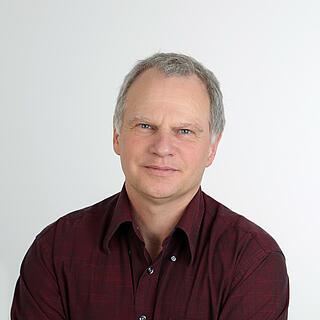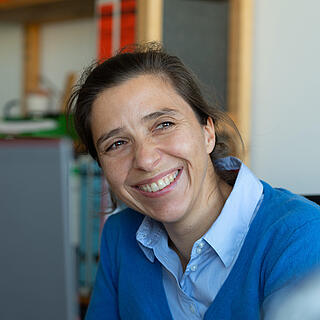Germany 2049: Transition to a sustainable use of raw materials. Goals and actions

[Translate to English:] Den Weg in eine nachhaltige Rohstoffwirtschaft gestalten
Designing the route today to tomorrow’s sustainable raw material management – this is the Oeko-Institut’s ambition in presenting its raw material transition (Rohstoffwende) strategy in Berlin on 1 December. The key message: the broad spectrum of raw materials calls for targets and measures tailored specifically to the issues prevailing in each material group. This is essential in order to mitigate the environmental and social problems arising from the extraction, use and disposal of these materials, and in order that consumers and industry can benefit from ethically and environmentally sustainable raw material use. The third Oeko-Institut Policy Paper, due to be presented ahead of the Annual Conference in Berlin on 1 December, shows how these qualitative and quantitative targets for the transition to sustainable raw material management can be defined.
In this paper the researchers have divided up the seventy-five raw materials analysed into two groups – bulk raw materials with an annual demand in Germany of more than 100,000 tonnes and non-bulk materials with a lower demand – and into six clusters in each group. The clusters assemble raw materials that either have similar specific characteristics or exhibit common “hot spots”, that is, particular high risks. Finally, for each cluster and for a typical raw material in each cluster (known as the cluster representative), the research team identified specific goals and actions for sustainable extraction, use and disposal.
Example of a cluster of materials used on a large scale: “Construction materials sourced in Germany” and “Principal bulk metals”
For example, the “Construction materials sourced in Germany” cluster contains the raw materials gravel, sand, natural stone and clay. All these are extracted from natural deposits in Germany, which above all consumes land. The encroachment into the countryside even extends to clearing unspoilt ancient woodland. The Oeko-Institut’s first step was to devise quantitative targets for this cluster. To reduce the input of primary raw material, buildings should be used for longer and be refurbished instead of demolished. The research team’s specific proposal is to raise the annual rate of refurbishment by 2049 to 1 per cent compared with today’s 0.8 per cent for commercial property, and to 3 per cent as against the current 1 per cent for residential buildings. This can reduce the annual demand for clay, natural stone and sand by at least 20 per cent by 2049, and for gravel by up to as much as 45 per cent. The experts will produce a further analysis of gravel, the cluster representative, before the end of the project.
“It is precisely in the case of abiotic bulk raw materials, that is, the non-renewable ones, that we must reduce the consumption of primary raw materials, to minimise the environmental risks from their extraction”, emphasises Dr. Matthias Buchert, manager of the cross-divisional project “Germany 2049 – transition to sustainable raw materials management”. “This also applies to the metals in our ‘Principal bulk metals’ cluster: iron/steel, aluminium and copper. We have devised quantitative targets for them, such as reducing the annual primary demand for steel by 40 per cent. We have also identified qualitative targets, such as compliance with environmental and social standards in ore production, and more rigorous recycling.”
Example of a cluster of niche materials: “Rare earths” and “Readily recyclable raw materials”
The “Rare earths” cluster contains all rare earths with the common characteristic that they are still almost never recycled and are sometimes mined in working conditions hazardous to health. That is why mainly quantitative targets were devised for 2049, using the example of neodymium, the cluster representative: to use more recycled material (at least 30 per cent); to use IT and telecommunications goods for at least twice as long as at present; at least 80 per cent of the necessary primary material to have a sustainability certificate proving responsible extraction.
“There are also raw materials that already have high recycling rates such as the ferrous metals nickel and niobium, non-ferrous metals like magnesium, cobalt and tin, and precious metals like gold and platinum”, adds Stefanie Degreif, a researcher at the institute’s Resources & Transport Division. “Recycling rates should be boosted further for these metals, too, especially in selected fields. For instance, recycling rates for gold and silver could be raised to 50 per cent in the electronics sector, while rates for the platinum and palladium used in vehicles could increase to 80 per cent.”
Project “Germany 2049: Transition to a sustainable use of raw materials”
The Oeko-Institut will present the key findings of its “Germany 2049” project at its annual conference in Berlin on 1 December 2016. The institute anticipates that the final report will be available at the end of 2016. In it the Oeko-Institut sets out a comprehensive strategy for a transition to sustainable raw material use, which underpins long-term policy objectives with raw material-specific targets and viable actions for tackling the immense environmental, economic and social challenges.
Further information:
<link forschung-beratung themen nachhaltige-ressourcenwirtschaft rohstoffwende-2049-zur-zukunft-der-nationalen-und-internationalen-rohstoffpolitik>Information on and programme for the Oeko-Institut’s Annual Conference 2016 “Germany 2049: Transition to a sustainable resource policy” (in German)
Further information on Oeko-Institut’s raw materials and resources projects can be found in English and German at www.ressourcenfieber.de.

